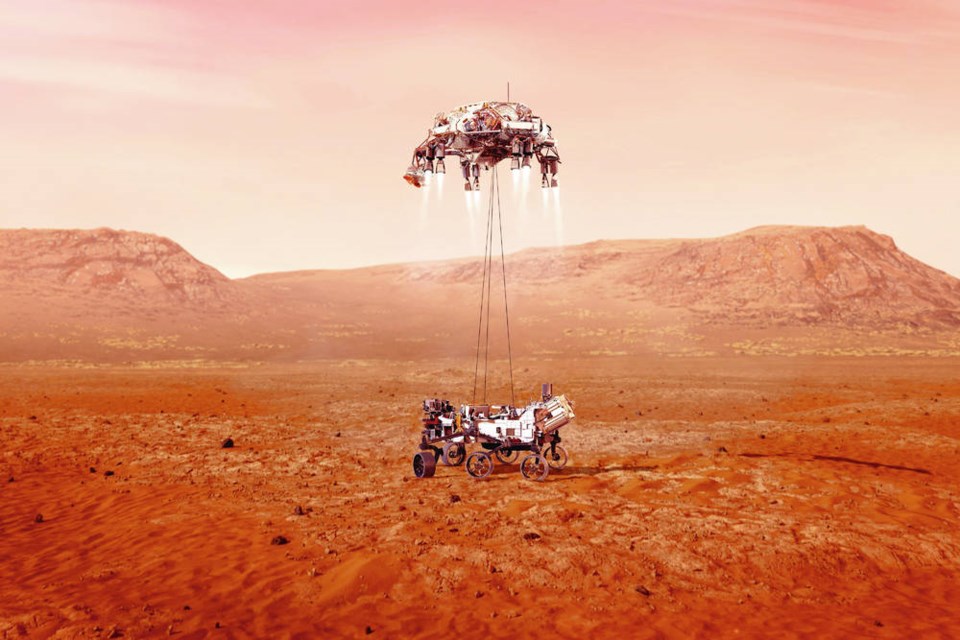Down the ages, one of humanity’s most perplexing questions has been, are we alone in the universe?
For the past 40 years, astronomers at the U.S.-based SETI Institute have tried to answer that question by looking for radio signals originating beyond our solar system.
But though millions of radio bands have been scrutinized, virtually nothing has been found. There was one tantalizing moment in the late 1970s when a radio telescope at Ohio University tuned in on a 72-second signal that appeared to be of extraterrestrial origin.
But it never reappeared, and attempts to determine its origin turned up nothing. It might simply have been a signal from a passing aircraft.
While the failure of these efforts doesn’t rule out the possibility that intelligent life exists elsewhere, it is discouraging. It had once been thought there should be at least 10,000 technically sophisticated societies in our galaxy. As time passes with nothing found, that appears increasingly unlikely.
However if we look closer to home, perhaps we can find a modicum of proof that at least some lifeforms are not confined to Earth.
NASA’s Perseverance rover has landed safely on Mars — you can watch a video of the landing at the space agency’s website, taken with an onboard camera.
While previous rovers have had some limited ability to collect and analyze surface materials, none of the tests showed conclusively whether life once existed on Mars.
There is reason to believe that it may. The planet is known to have had lakes and oceans that persisted for several hundred million years. That should be long enough for basic lifeforms to flourish, though we’re likely talking about simple organisms, not the Siths and Thoats of Edgar Rice Burroughs’ Barsoom.
For a time, there was also an atmosphere dense enough to protect the surface of the planet from harmful radiation. That increases the possibility that lifeforms developed.
Whether they could survive today is another matter. The planet’s atmosphere is now far thinner, temperatures have plummeted and the oceans are gone. The only visible remains of water are small dustings of snow and ice at the poles.
Nevertheless, Mars is known to have deep lava tubes and underground galleries. It’s conceivable liquid water could still exist there. That would give lifeforms a chance of surviving.
But even if none are left, fossil remains may still lie on or under the surface. And Perseverance has the means of searching these out.
The rover is equipped with a small helicopter that, if it can fly in the thin Martian atmosphere, will be used to seek out promising sites.
Perseverance can then use its drilling tools to burrow down below the surface, extract core samples and package them in sterile tubes.
The intent here is that a follow-up mission will collect the tubes and return them to Earth for closer examination, perhaps by 2030.
That very well may answer the age-old question.
Certainly there are other possible locations to explore. Pluto is thought to have sub-surface seas, as are several of the moons orbiting Saturn and Jupiter. That at least raises the possibility that life could exist there.
We know that here on Earth, plant and crustacean colonies have been found on ocean floors far beneath the reach of sunlight. They survive by clustering around deep-sea volcanic vents that provide energy in the form of heated water.
So yes, it’s possible that one day we might plumb the subsurface oceans of Enceladus or Europa and find life.
Yet compared with Mars, those are long shots, if only because of the huge distances involved and the need to drill down through kilometres of ice.
If life beyond our own planet is to be found, at least in our lifetime, the Red Planet is the best hope.
The designer of Perseverance’s landing parachute wove the words “Dare Mighty Things” into the fabric.
It would indeed be a mighty thing if human ingenuity and perseverance revealed that life does exist beyond our own small corner of the universe.



